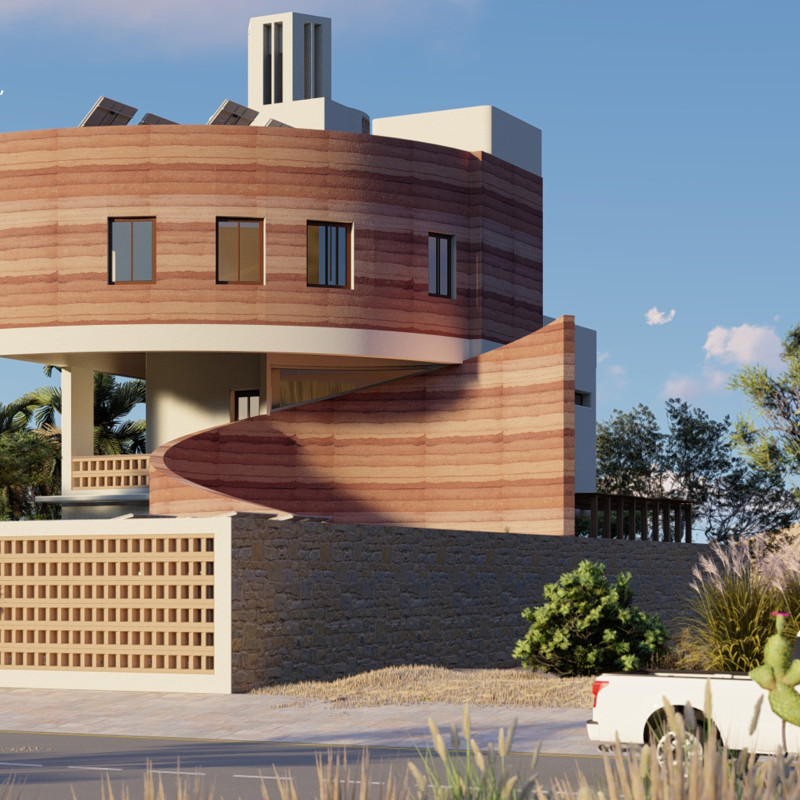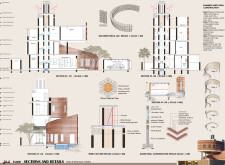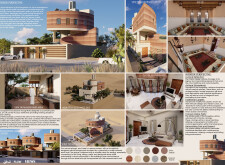5 key facts about this project
### Project Overview
The TADAFAQ bungalow is situated in a sun-drenched region that emphasizes sustainable living through the integration of architectural design and environmental strategies. The project seeks to forge a connection between the built environment and its natural surroundings, promoting both comfort and usability for its inhabitants. Through the innovative use of materials and design techniques, this dwelling reflects a commitment to harmonizing aesthetics with ecological considerations.
### Climate-Responsive Design
The architectural strategy is informed by a thorough site analysis that takes into account solar orientation and prevailing wind patterns. The bungalow's orientation optimizes solar gain throughout the year, employing large overhangs to provide shade in summer while allowing for natural warmth during the winter months. Cross-ventilation is achieved through strategically positioned openings, including windows and wind catchers, enhancing indoor air quality and thermal comfort by facilitating natural airflow.
### Material Selection
Locally sourced materials play a crucial role in aligning the project with sustainability principles. Rammed earth is utilized for walls, delivering excellent thermal mass and insulation, while adobe adds both energy efficiency and aesthetic appeal. Sun-dried bricks are incorporated into jali screens to allow for airflow, and local timber is employed in both structural and decorative elements to enhance warmth and texture. The combination of these materials not only fulfills functional requirements but also resonates with the regional architectural vernacular.
### Sustainability Measures
The project emphasizes off-grid sustainability through several key strategies. Photovoltaic panels are installed to harness solar energy, enabling on-site electricity generation. Additionally, a rainwater harvesting system collects and recycles water, reducing dependency on external sources. Provisions for converting organic waste into energy contribute to a circular economy, further underscoring the bungalow’s commitment to minimizing ecological impact.






















































